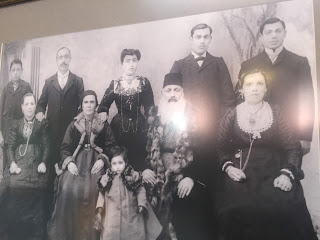A morning at the Kehila Kedosha Janina
This morning I took a group of my students from Stern College and Revel Graduate school to one of the few remaining shuls on the Lower East Side, Kehila Kedosha Janina. Among the 400 places of Jewish worship that could be found in the tenements of the Lower East Side in the first half of the 20th century, Janina was unique. It was the spiritual home for the small yet ancient Romaniote Jews who found their way to the Americas. These Greek-speaking Jews have roots in the Eastern Mediterranean dating back to Hellenistic times. They maintained their customs and prayer rites throughout the major shifts of Jewish history. With the arrival of the Sephardim after the expulsion from Spain this group was largely absorbed into the more numerous and culturally hegemonic new comers. Most of the Greek speaking Jews married into and merged into the wider Iberian Jewish society that was transplanted and transformed in the Ottoman Empire. However, throughout the Eastern Mediterranean there were those who maintained their distinct identity and kept this unique culture alive.
Our gracious, passionate and knowledgeable guide Marcia
Hadad Ikonomopulus is a testament to the ways this community was at once
distinct and deeply enmeshed in the wider Sephardic culture of the Balkans and
Turkey- on one side she comes from Ladino speaking Sephardim and on the other
she is Romaniote. She shared powerful stories of her family’s immigration and
their efforts to keep their culture alive.
I hope this visit can help my students think about their own
family histories of immigration and the ways that each individual navigated their
reinvention in the New World. I would like them to think about how their parents,
grand parents or great grandparents figured out how much to keep and how much
to forget or transform and adapt to their new home. Seeing how this minority
within a minority within a minority managed to survive and thrive I believe can
push us to rethink our own family narratives and better appreciate the layers
of memory that we use to make sense of our place in history.
For more information check out their website: https://www.kkjsm.org/
and don't miss the upcoming festival:
https://www.kkjsm.org/greek-jewish-festival






No comments:
Post a Comment